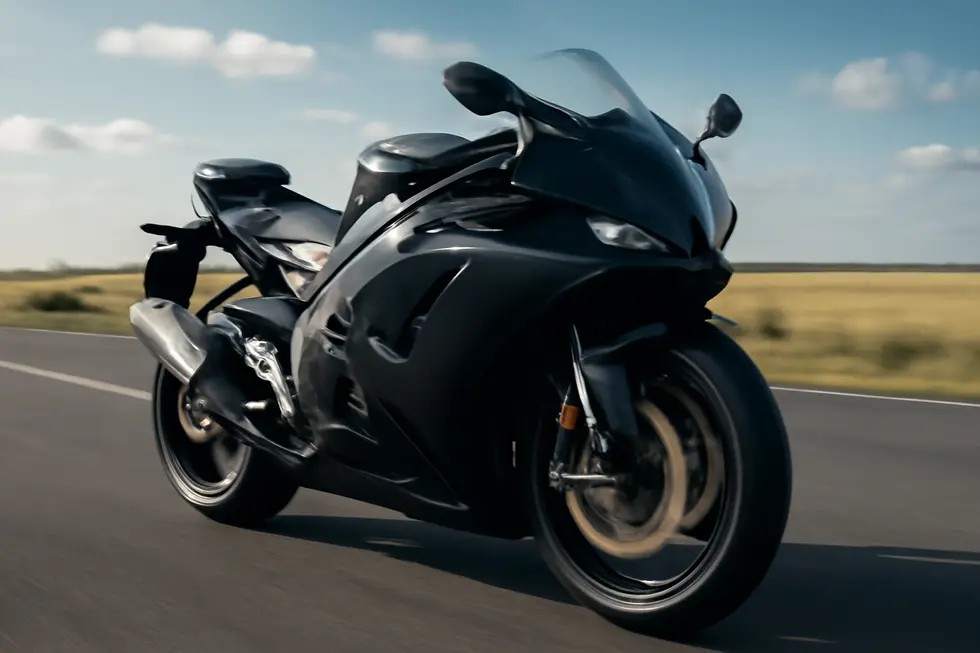Mastering Motorcycle Fairing Molds: Key Insights for Business Owners
October 10, 2025 | by summitfairings
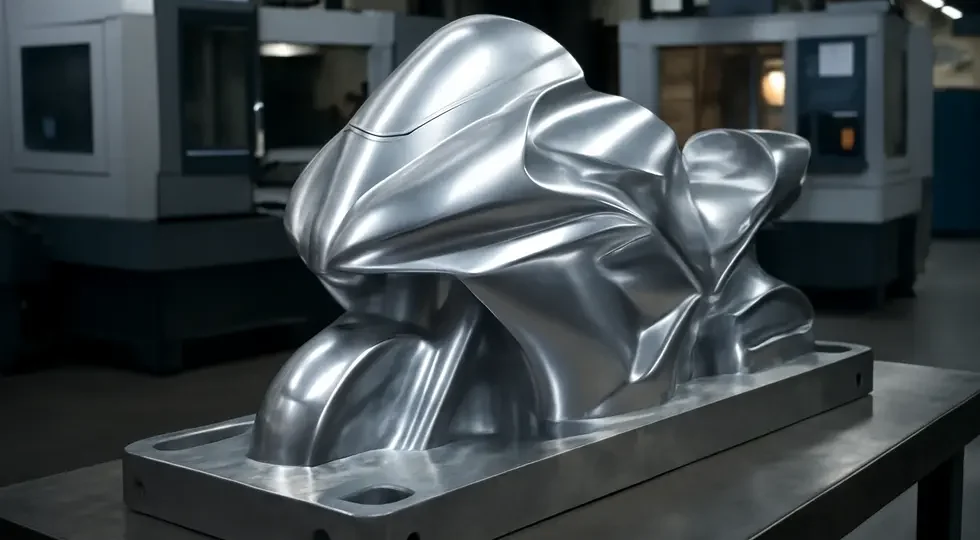
Introduction
Motorcycle fairing molds are the backbone of producing high-quality, durable, and aesthetically appealing body panels that define motorcycle styling and protection. For business owners in the automotive and aftermarket sectors, understanding the nuances of motorcycle fairing molds—from design to market trends—is vital for making informed investments and strategic decisions. This article delves into the design specifications critical to ensuring perfect fitment and functionality, explores the advanced materials and technical standards shaping mold performance, outlines the manufacturing processes driving precision and efficiency, weighs the advantages and drawbacks of mold-based production, examines the inherent production challenges, and finally, offers a comprehensive market analysis revealing growth drivers and competitive pressures. Together, these chapters provide a holistic understanding to help businesses capitalize on the evolving demands of motorcycle fairing fabrication and sales.
Tables of Contents
Chapter 1: Design and Specifications of Motorcycle Fairing Mold
- Innovative Materials and Cutting-Edge Technologies Shaping Motorcycle Fairing Mold Design
- Balancing Manufacturing Excellence and Cost Efficiency in Motorcycle Fairing Mold Design
- How Geopolitical and Societal Dynamics Shape Motorcycle Fairing Mold Design
Chapter 2: Materials and Technical Aspects of Motorcycle Fairing Mold
- Choosing Mold Materials: How Selection Shapes Fairing Quality and Durability
- Overcoming Engineering and Manufacturing Challenges in Motorcycle Fairing Mold Design
- How Fairing Materials Define Mold Construction and Manufacturing Techniques
Chapter 3: Manufacturing Process of Motorcycle Fairing Mold
- Precision Design and Machining: Crafting the Perfect Motorcycle Fairing Mold
- Mastering Injection and Blow Molding: Core Plastic Forming Methods in Motorcycle Fairing Mold Production
- Harnessing Advanced Materials and Precision Finishing for High-Performance Motorcycle Fairing Molds
Chapter 4: Advantages and Disadvantages of Motorcycle Fairing Mold
- Balancing Precision and Complexity: The Technological Edge and Limits of Motorcycle Fairing Molds
- Economic Implications of Motorcycle Fairing Molds: Investment Versus Efficiency
- Geopolitical and Societal Impacts Shaping Motorcycle Fairing Mold Manufacturing
Chapter 5: Production Challenges in Motorcycle Fairing Mold Fabrication
- Navigating Material and Design Complexities in Motorcycle Fairing Mold Production
- Navigating Manufacturing Complexities and Economic Realities in Motorcycle Fairing Mold Production
- Navigating Advanced Technologies and Skill Demands in Motorcycle Fairing Mold Production
Chapter 6: Market Analysis of Motorcycle Fairing Mold Industry
- Cutting-Edge Technologies Driving Evolution in Motorcycle Fairing Mold Market Analysis
- Economic Drivers and Growth Outlook Shaping the Motorcycle Fairing Mold Market
- Advancing Sustainability and Material Innovation in Motorcycle Fairing Mold Market Dynamics
Chapter 1: Design and Specifications of Motorcycle Fairing Mold
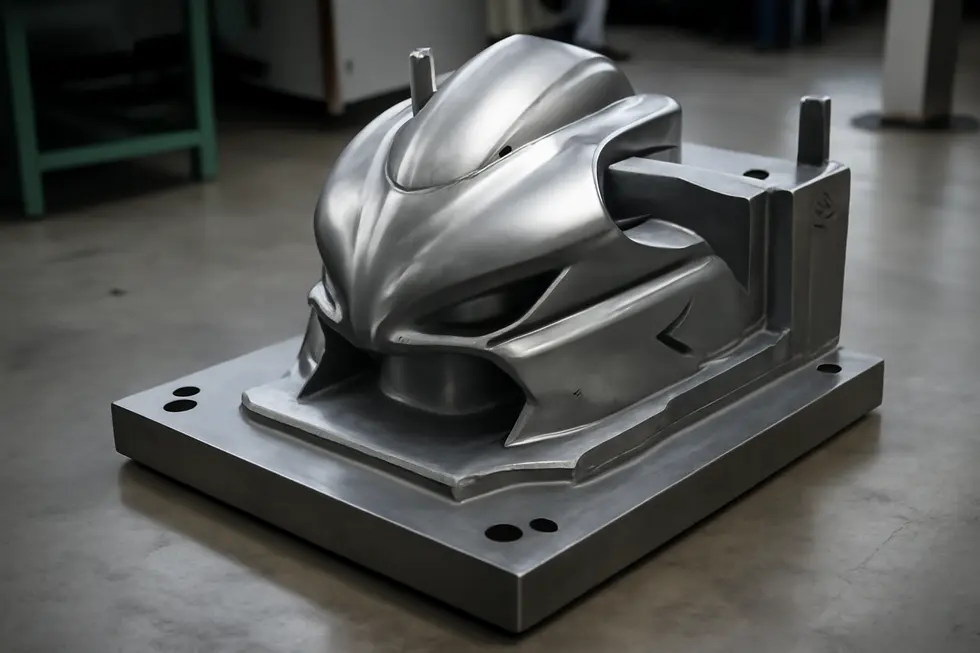
1. Innovative Materials and Cutting-Edge Technologies Shaping Motorcycle Fairing Mold Design
The selection of materials and the integration of technological innovations critically influence the design and specifications of motorcycle fairing molds. Durable metals like steel and aluminum remain fundamental, offering the precise thermal and dimensional stability required for high-volume production. Steel molds excel in longevity, while aluminum allows lighter molds with excellent heat conduction. Meanwhile, advanced composites such as carbon fiber and fiberglass contribute to molds designed for premium fairings, enhancing strength-to-weight ratios and facilitating intricate surface finishes. Technological advances further revolutionize mold production. High-precision injection molding benefits from refined mold flow simulations and multi-cavity setups to boost efficiency and product quality. Meanwhile, 3D printing enables rapid prototyping and complex geometries, dramatically reducing lead times and enabling tailored customization. Alongside material and process innovations, strict maintenance protocols ensure mold durability and consistency over extensive production cycles. These combined advancements enable manufacturers to meet diverse application demands with molds that deliver precise, repeatable results and superior finish quality. For further exploration, see the comprehensive insights at Explore the Best Motorcycle Fairings at Summit Fairings.
2. Balancing Manufacturing Excellence and Cost Efficiency in Motorcycle Fairing Mold Design
Manufacturing motorcycle fairing molds demands a precise blend of advanced materials, cutting-edge technology, and economic foresight. High-strength steels and aluminum alloys form the backbone of durable mold cavities, capable of enduring intense thermal and mechanical stresses during injection molding or composite curing. Modern design leverages digital twins and simulation software to refine mold geometry, minimizing material waste and enhancing longevity. Automation and AI integration further optimize production speed and product consistency. Economically, the initial investment in premium materials and smart manufacturing is offset by extended mold lifespans and reduced downtime, driving down total production costs. Cost-performance trade-offs are carefully evaluated as high-end composites deliver excellent strength-to-weight ratios but increase processing expenses. Emerging sustainable practices incorporate recycled composites, balancing environmental responsibility with cost management. The molds themselves must support complex aerodynamic shapes and facilitate high-quality surface finishes, ensuring fairings meet stringent aesthetic and functional standards. These combined factors create molds that are not only precise but also economically viable across millions of production cycles. For insights on fairing choices and economical production strategies, explore more at our detailed resource on affordable motorcycle fairings.
3. How Geopolitical and Societal Dynamics Shape Motorcycle Fairing Mold Design
The design and specifications of motorcycle fairing molds are profoundly affected by geopolitical and societal dynamics, which dictate materials, manufacturing strategies, and compliance requirements. Geopolitical factors such as trade policies and tariffs influence the availability and cost of metals and composites critical for mold building. Manufacturers often adapt by opting for locally sourced or alternative materials, thus altering mold design parameters to accommodate new physical properties. Additionally, political stability guides manufacturing locations, where advanced technologies thrive in stable regions, while cost-driven areas may favor simpler mold designs. On the societal front, consumer preferences shaped by cultural trends require molds to support diverse styling and functional needs across motorcycle categories. Environmental awareness and tightening regional regulations push for lightweight, recyclable materials, compelling mold designs to optimize for these attributes while ensuring safety standards are consistently met. The result is a nuanced balance where molds are tailored not only for technical precision but also to fit the economic, cultural, and regulatory fabric of target markets. This holistic approach ensures motorcycle fairing molds remain competitive and compliant globally, reflecting shifts in global supply chains and emerging consumer demands. For deeper insights into mold customization aligned with market trends, visit the detailed discussions on affordable motorcycle fairings.
Chapter 2: Materials and Technical Aspects of Motorcycle Fairing Mold
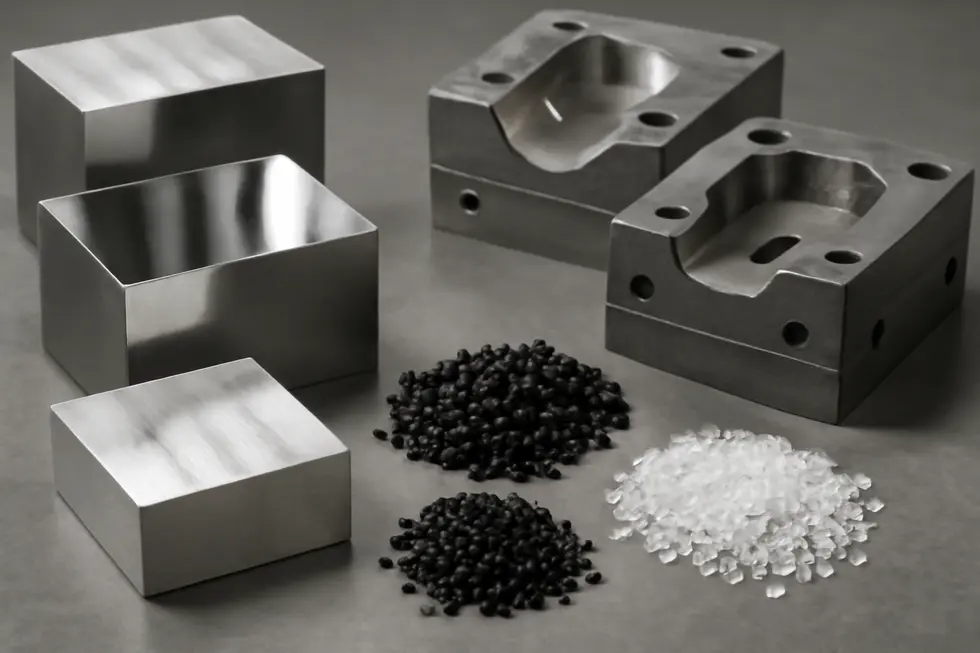
1. Choosing Mold Materials: How Selection Shapes Fairing Quality and Durability
The selection of materials for motorcycle fairing molds critically influences the quality, durability, and performance of the final fairing parts. Common choices range from ABS plastic, prized for its elasticity and impact resistance ideal for street motorcycles, to fiberglass composites known for strength and lightweight properties favored in racing applications. Advanced composites like carbon fiber offer superb thermal stability and wear resistance, extending mold lifespans and enhancing production efficiency, albeit at higher costs. Metals such as aluminum and chromium-molybdenum steel primarily serve in mold frameworks, delivering the necessary structural stiffness and heat endurance to withstand repetitive molding cycles. Key selection criteria include heat resistance to prevent deformation during molding, flexibility to avoid cracking, surface finish capability for aesthetic precision, and cost-effectiveness aligned to production volume. These factors collectively define the fairing’s dimensional accuracy, aerodynamic quality, and impact resistance. Incorporating sustainable materials and advanced manufacturing techniques further refines mold performance and environmental impact. Such careful material selection is foundational to producing high-quality fairings that meet diverse rider demands and industry standards. For deeper insights, explore an ultimate source for affordable motorcycle fairings.
2. Overcoming Engineering and Manufacturing Challenges in Motorcycle Fairing Mold Design
Designing motorcycle fairing molds demands meticulous attention to complex geometries, material behavior, and production precision. These molds must withstand high temperatures and pressures inherent to injection molding thermoplastics like ABS and polycarbonate, while also accommodating composite processes involving fiberglass or carbon fiber, which require thermal stability for resin curing. Engineers navigate intricate aerodynamic shapes by incorporating features such as lifters and side-actions, ensuring tight dimensional tolerances crucial for seamless fitment and durability. Controlling shrinkage, warping, and surface defects necessitates advanced mold fabrication techniques like CNC machining and electrical discharge machining. Additionally, fairing molds integrate critical mounting points and structural elements for functional longevity. Rapid prototyping through 3D scanning and printing increasingly supports iterative refinements, reducing costly errors before full-scale production. Successfully balancing these engineering and manufacturing factors results in molds that produce consistent, high-quality fairings, meeting both aesthetic and performance demands. For a comprehensive view, explore detailed technical insights on advanced fairing mold design and fabrication.
3. How Fairing Materials Define Mold Construction and Manufacturing Techniques
Motorcycle fairing materials such as ABS plastic, fiberglass composites, and carbon fiber critically shape mold design and manufacturing approaches. ABS plastic, favored for its impact resistance and ease of injection molding, requires steel or aluminum molds capable of withstanding high-pressure, high-temperature cycles without distortion. These molds offer durability for mass production despite higher upfront tooling costs. Conversely, fiberglass and carbon fiber fairings, often formed through hand layup or vacuum bagging, utilize molds made from epoxy, polyester resin, or sometimes silicone rubber. These materials offer flexibility for lower-volume or custom runs but have shorter mold lifespans and may lack the high-temperature resilience of metal molds. Carbon fiber’s superior strength-to-weight ratio mandates precision epoxy composite molds reinforced with metal substrates, capable of maintaining dimensional accuracy under autoclave curing pressures and temperatures. This interplay between fairing material properties and mold construction influences cost, production speed, and finished quality. Balancing these factors ensures fairings meet mechanical demands while aligning with manufacturing economics, making the mold a pivotal element dictated by the chosen composite or thermoplastic used in the fairing.
For deeper insights into fairing options and manufacturing choices, visit this comprehensive guide.
Chapter 3: Manufacturing Process of Motorcycle Fairing Mold
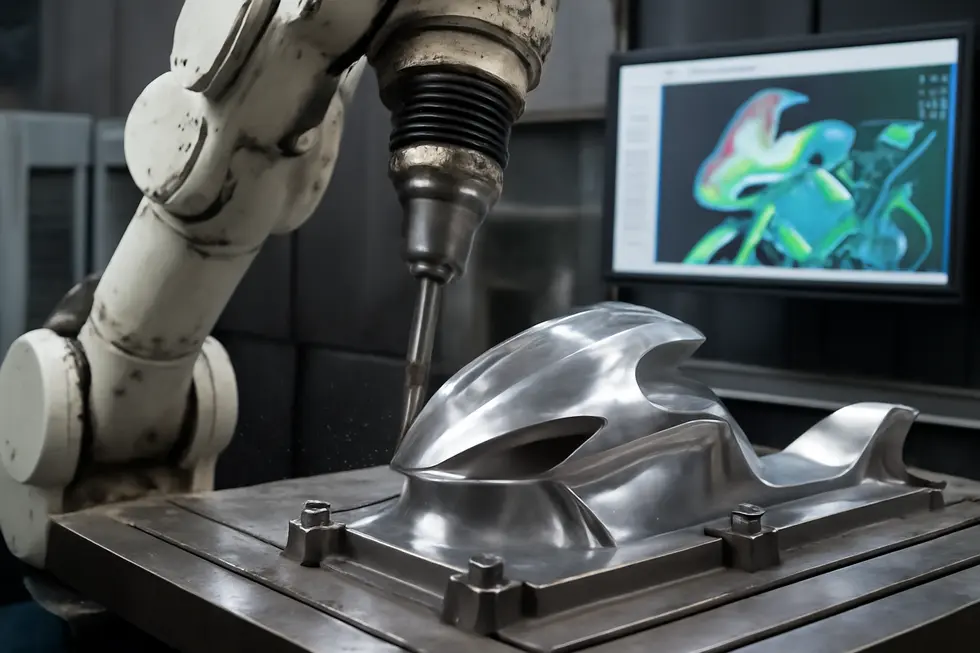
1. Precision Design and Machining: Crafting the Perfect Motorcycle Fairing Mold
The foundation of a high-quality motorcycle fairing mold lies in meticulous design paired with precision machining. Utilizing advanced CAD software and AI-driven simulations, engineers create detailed digital models that optimize geometry and minimize defects before any material is cut. Material selection, predominantly aluminum or hardened steel, ensures durability and resistance to wear during repeated molding cycles. CNC machining techniques carve the mold with tolerances often within ±0.05 mm, guaranteeing that every curve and edge matches the specified motorcycle model for a flawless fit. Laser tracking and fine fixture adjustments maintain dimensional accuracy and surface integrity essential for the aesthetic and functional qualities of the final fairing. Post-machining, molds undergo regular maintenance—cleaning, lubrication, and inspections—to preserve precision and extend lifespan throughout high-volume production. This integration of sophisticated design tools and exacting machining processes underpins the manufacture of molds that consistently yield durable, precise, and visually appealing motorcycle fairings. For those interested in the industry’s practical applications, an insightful overview of mold making can be found in a factory tour video documenting real-world workflows.
2. Mastering Injection and Blow Molding: Core Plastic Forming Methods in Motorcycle Fairing Mold Production
Injection molding stands as the predominant method for producing motorcycle fairings, leveraging molten plastics such as ABS, nylon, or polycarbonate injected under high pressure into precision-machined steel or aluminum molds. This process yields components with exceptional surface finish, structural integrity, and intricate detail, all critical for the precise fit and aerodynamic styling required. Mold sizes and designs vary substantially depending on the motorcycle model and desired coverage, with aluminum and steel molds commonly employed to withstand repeated thermal cycling and maintain tight tolerances around ±0.05 mm. In contrast, blow molding, particularly extrusion blow molding, is used for simpler, hollow parts within the fairing assembly. It involves inflating a heated plastic parison inside a mold cavity, providing lightweight structures though with less surface definition compared to injection molding. Both techniques demand rigorous mold maintenance—including cleaning and lubrication—to preserve accuracy and extend mold life over thousands of cycles. While ABS dominates as the material choice for durability and impact resistance, innovations like carbon fiber composites are emerging to enhance mold resilience. Understanding these forming methods ensures consistent, high-quality production in the competitive motorcycle fairing market. For more detailed insights on plastic part manufacturing, explore this comprehensive source on motorcycle fairings.
3. Harnessing Advanced Materials and Precision Finishing for High-Performance Motorcycle Fairing Molds
The manufacturing of motorcycle fairing molds relies heavily on selecting advanced materials and applying precision finishing to ensure durability, accuracy, and a flawless surface texture. Molds are typically crafted from aluminum or hardened steel alloys, chosen for their resistance to heat and deformation during repeated injection or compression molding cycles. Emerging materials like specialized steel alloys and carbon fiber composites enhance mold longevity by improving wear resistance and heat tolerance, essential for producing high-quality parts like carbon fiber fairings.
Finishing techniques such as meticulous polishing and ceramic coating play a crucial role in delivering smooth, defect-free surfaces on fairings. These finishes not only improve the aesthetic appeal but also reduce post-molding refinishing efforts. Routine maintenance, including cleaning, inspection, and lubrication with silicone-based lubricants, preserves mold accuracy and extends service life.
Innovations in digital technologies such as simulation and AI-driven automation optimize mold design and finishing, minimizing defects and improving production efficiency. This synergy of advanced materials and refined finishing processes is fundamental to producing fairings that meet both functional performance and visual standards. For deeper insights into mold craftsmanship, explore the extensive resources on motorcycle fairings at Summit Fairings.
Chapter 4: Advantages and Disadvantages of Motorcycle Fairing Mold
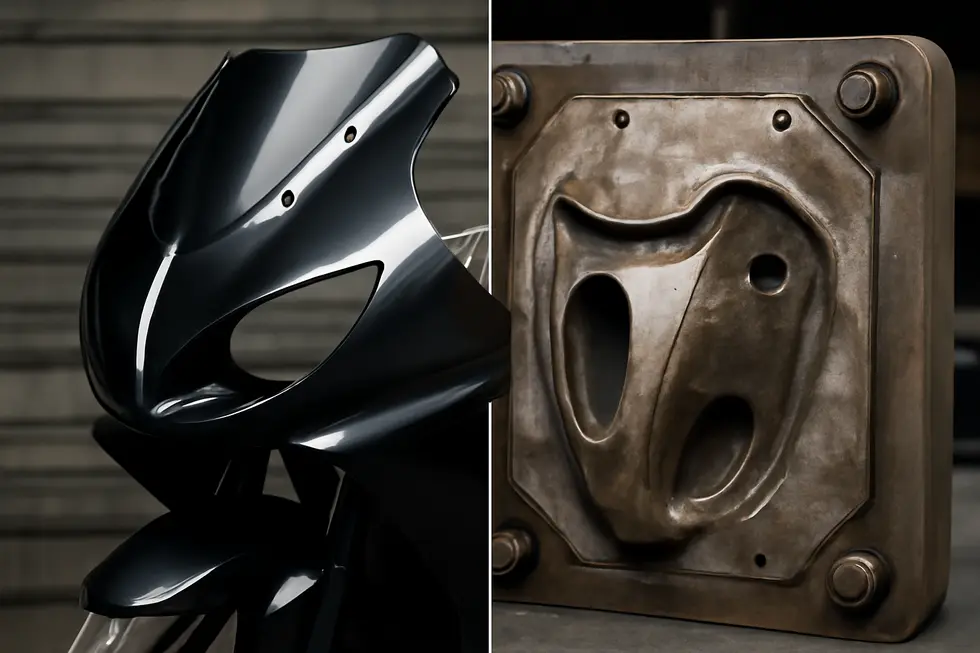
1. Balancing Precision and Complexity: The Technological Edge and Limits of Motorcycle Fairing Molds
Motorcycle fairing molds deliver unmatched precision in creating complex aerodynamic shapes with uniform wall thickness, which is essential for both structural integrity and sleek design aesthetics. These molds reduce internal stresses during forming, resulting in durable, lightweight fairings that enhance motorcycle performance and rider comfort. Utilizing materials like aluminum alloys and composite plastics, they offer corrosion resistance and high repeatability, ensuring consistent quality across production runs. However, this technological sophistication comes at a high initial cost and demands exacting engineering and fabrication precision. Poor mold design or incorrect materials can cause defects such as warping, uneven thickness, or sealing failures that compromise safety and aesthetics. Production cycle times may also lengthen with intricate designs, limiting scalability and increasing costs. Ultimately, manufacturers must balance the superior quality and durability that these molds offer against their complexity, expense, and potential for defects. For those interested in exploring a wide range of technologically advanced and precisely crafted fairings, resources like this collection of motorcycle fairings provide valuable insights into the final applications of such mold technologies.
2. Economic Implications of Motorcycle Fairing Molds: Investment Versus Efficiency
Motorcycle fairing molds play a pivotal role in the economic dynamics of fairing production. Their foremost advantage lies in enabling mass production with consistent quality, reducing the cost per unit over large runs. This scalability makes fairings more cost-effective and accessible to riders, while molds’ durability ensures multiple reuse cycles, offsetting the initial capital outlay. High-quality molds also contribute to producing impact-resistant components, extending the end product’s lifespan and reducing maintenance expenses for consumers.
However, this economic efficiency comes with substantial upfront investment. Designing and fabricating precise molds demand advanced technology and expert craftsmanship, which are costly. Furthermore, molds may require replacement or modification if motorcycle designs evolve or wear issues arise, adding ongoing expenses. Production delays can also occur due to complex mold creation processes. Despite some mitigation through trade-in programs for old molds, the balance between initial mold cost and long-term production savings remains a critical consideration for manufacturers.
For a deeper exploration of affordable options in motorcycle fairing production, explore the comprehensive resources available at Summit Fairings.
3. Geopolitical and Societal Impacts Shaping Motorcycle Fairing Mold Manufacturing
Motorcycle fairing mold production plays a significant role in shaping both geopolitical landscapes and societal dynamics. On a geopolitical level, countries excelling in mold manufacturing bolster their economic stature through trade partnerships and technological innovation, forging strong positions in global supply chains. However, this specialization also exposes them to risks from trade conflicts, import-export restrictions, and political instability affecting raw material access and production continuity. Concentrated manufacturing hubs may trigger international competition or dependencies, influencing market control and collaboration opportunities.
Societally, local mold production fosters skilled employment and regional development while making motorcycles more affordable and accessible, which can alleviate traffic and pollution in urban areas. Yet, challenges persist in environmental sustainability, as mold fabrication and fairing material waste impose pollution risks. High tooling costs restrict smaller manufacturers’ participation, limiting innovation diversity. Worker health hazards from chemical exposure and unequal market access to premium, eco-friendly fairings highlight pressing social concerns. Addressing these intertwined geopolitical and societal factors is essential for sustainable progress in motorcycle fairing mold industries.
Explore further insights into industry trends and products here.
Chapter 5: Production Challenges in Motorcycle Fairing Mold Fabrication
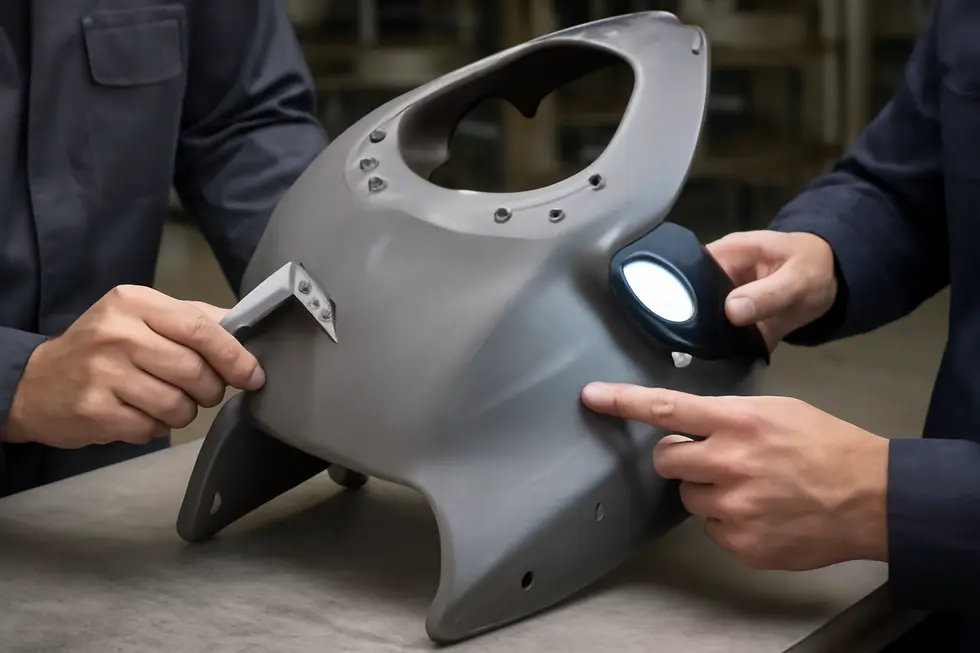
1. Navigating Material and Design Complexities in Motorcycle Fairing Mold Production
Motorcycle fairing mold fabrication demands a delicate balance between material properties and precise design requirements. Common fairing materials such as ABS plastic, fiberglass, and carbon fiber each introduce unique challenges. ABS plastic offers impact resistance and flexibility, ideal for high-volume production, yet its thermal behavior requires careful mold design to prevent warping. Fiberglass provides lightweight strength but is less forgiving during molding, often needing tailored surface finishes. Carbon fiber, prized for strength-to-weight ratio, complicates mold fabrication due to its cost and processing intricacies.
Designing for aerodynamic efficiency and exact fitment intensifies these complexities. Fairings must conform to specific motorcycle models while optimizing airflow to enhance stability and performance. This necessitates advanced CAD modeling and simulation to accommodate varying shapes, mounting points, and regional specifications. Achieving tight tolerances around ±0.05 mm is vital, as any deviation compromises both function and aesthetics.
Together, material characteristics and sophisticated design demands create a production environment where precision and adaptability are critical. Effective management of these intricacies supports durability and quality in the final fairing, making the molding process central to successful motorcycle component manufacturing. For further insights into fairing materials and design, visit the Summit Fairings blog.
2. Navigating Manufacturing Complexities and Economic Realities in Motorcycle Fairing Mold Production
The fabrication of motorcycle fairing molds demands a melding of high-precision manufacturing and substantial economic investment. These molds are typically crafted using advanced CNC machining processes, with materials like hardened steel alloys and aluminum chosen for durability and tight tolerance achievement. Simulation technologies help optimize mold design by predicting defects and reducing waste, which is vital for maintaining efficiency and quality. The injection molding process then forms the fairing parts under high pressure, requiring fine control over cycle times and cooling to prevent defects such as warping or sink marks. Economically, the upfront costs of tooling, specialized materials, and skilled labor create significant barriers, especially for low-volume productions where amortization over fewer units increases costs. Market trends—such as rapid model changes and growing demand for lightweight composites—increase pressure on both design flexibility and production speed. Thus, balancing precision engineering with economic feasibility remains a central challenge, demanding ongoing innovation in both manufacturing techniques and cost management. For insight into how these molds contribute to market offerings, see explore the best motorcycle fairings at Summit Fairings.
3. Navigating Advanced Technologies and Skill Demands in Motorcycle Fairing Mold Production
The rise of advanced technologies in motorcycle fairing mold fabrication brings both opportunities and challenges. Innovations such as multi-axis CNC machining, AI-driven simulations, and automation have elevated precision and efficiency in mold creation. These tools enable manufacturers to achieve complex aerodynamic designs with consistent quality and tighter tolerances. Additionally, the introduction of advanced composite materials, especially carbon fiber, demands exacting mold specifications and handling techniques to ensure optimal part performance.
However, these technological leaps necessitate a workforce with expanded capabilities. Beyond traditional craftsmanship, modern operators must master CAD/CAM software, manage composite curing processes, and troubleshoot automated machinery. The integration of smart manufacturing systems requires ongoing training to keep up with evolving digital tools and maintain production reliability. Consequently, the intersection of cutting-edge equipment and skilled labor defines the current landscape, making workforce development as critical as technological investment.
For deeper insights into modern fairing production dynamics, explore resources like the Summit Fairings blog.
Chapter 6: Market Analysis of Motorcycle Fairing Mold Industry

1. Cutting-Edge Technologies Driving Evolution in Motorcycle Fairing Mold Market Analysis
The motorcycle fairing mold industry is undergoing a significant transformation fueled by emerging technologies that reshape market dynamics. AI-assisted injection molding dramatically reduces defect rates by about 40%, enhancing production efficiency and product quality while lowering costs. Augmented reality (AR) tools further refine the process by enabling precise fitting and customization adjustments before manufacturing begins, minimizing waste and rework. The injection molding sector itself is expanding rapidly, driven by automation, improved die-making techniques, and sustainable materials, enabling producers to deliver lighter, more durable molds with faster cycle times. Advancements in composite materials such as carbon fiber and filament-wound fiberglass bolster the industry’s capability to produce stronger yet lightweight fairing components. These technological innovations are intertwined with market analysis approaches, integrating data on sustainability, automation, and material breakthroughs to better forecast trends and inform competitive strategies. Such advances position the industry for agile adaptation to evolving demands, sustaining growth and innovation. For insights on related industry developments, explore the comprehensive resources on motorcycle fairings.
2. Economic Drivers and Growth Outlook Shaping the Motorcycle Fairing Mold Market
The motorcycle fairing mold market is propelled by expanding motorcycle demand worldwide, fueled by rising affordability and preferences for fuel efficiency. As riders increasingly seek customized and visually striking body panels, mold demand mirrors this growth, with the motorcycle body kit segment expected to escalate from $1.8 billion in 2023 to $2.7 billion by 2028. Advances in manufacturing technologies, such as automation and innovative materials, further accelerate production efficiency and quality, helping manufacturers meet evolving consumer expectations. However, the industry faces pressure from fluctuating raw material costs and competition from low-cost producers. Opportunities emerge in emerging regions and through sustainable manufacturing adoption, which attracts environmentally aware markets. Embracing energy-efficient processes and automation enhances competitiveness and aligns with global trends toward leaner operations. For companies specializing in fairings, understanding these economic drivers and leveraging innovation is essential to thrive within this growing yet challenging market. For further insights on motorcycle fairings trends, explore comprehensive resources curated by industry leaders.
3. Advancing Sustainability and Material Innovation in Motorcycle Fairing Mold Market Dynamics
The motorcycle fairing mold industry is increasingly shaped by groundbreaking material innovations that align closely with sustainability goals. Manufacturers are leveraging advanced polymer blends and bio-based resins to produce molds that deliver enhanced durability, impact resistance, and weight reduction—key for improving fuel efficiency and rider safety. These eco-conscious materials reduce environmental footprints while maintaining stringent performance standards. Moreover, recycling technologies are gaining prominence, enabling efficient reuse of composites like fiberglass and carbon fiber, thus addressing end-of-life waste challenges. This dual focus on innovation and sustainability not only elevates product quality but also strengthens market competitiveness, particularly in regions where environmental regulations and consumer demand favor greener solutions. Companies prioritizing the integration of sustainable materials with cost-effective manufacturing techniques are strategically positioned to capitalize on the expanding global market, which is driven by rising motorcycle production and evolving design trends. Insights into these developments highlight the critical role sustainable material advancements play in shaping the fairing mold industry’s future. For deeper exploration, visit Summit Fairings’ blog for comprehensive industry perspectives.
Final thoughts
The realm of motorcycle fairing molds stands at the intersection of precision engineering, advanced materials, and ever-evolving market demands. For business owners, mastering the details of mold design and manufacturing processes is not merely technical knowledge but a strategic advantage that influences product quality, cost-efficiency, and market responsiveness. Recognizing the balance of advantages against inherent challenges enables sound investment and innovation decisions. Furthermore, an acute awareness of market dynamics—from raw material trends to regional production growth—equips businesses to anticipate shifts and seize emerging opportunities. Investing in specialized molds crafted with quality materials and robust manufacturing techniques ultimately underpins a competitive edge, distinguishing product offerings and satisfying the growing, diverse needs of motorcycle enthusiasts worldwide.
Ready to elevate your ride? Summit Fairings delivers premium, custom-fit fairings that blend style and durability. Whether you’re chasing speed or turning heads, we’ve got your bike covered. Don’t wait—transform your machine today. Click, customize, and ride with confidence. Your perfect fairing is just a few clicks away. Act now!
About us
undefined
RELATED POSTS
View all

